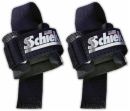It's no secret that doing the same workouts with the same internal variables over and over again won't lead to muscle growth. But you don't need to completely abandon your routine every time you need a change. Instead, implement one or more of these 11 simple hacks to kick your results back into overdrive!
Do Your Monday Workout on Sunday
I hate to ruin your love affair with pro football, but unless you enjoy standing in lines reminiscent of your childhood trip to Disneyland, Monday is absolutely the worst day to be in the gym—especially if you're planning to train your chest. Ironically, if you were to hit that same athletic club a mere 24 hours earlier, you'd find it practically empty. I've come to find the most serious lifters at my gym are there on Sundays to skip the crowds. In fact, maybe I shouldn't even have shared this tip...
Bust Out Your Cardio Between Sets
We know you're popular: You've got friends to text, selfies to post, and conversations to catch up on with your crew at the gym. None of this changes the fact that you've still got a cardio session waiting for you at the end of your workout. Why not get your cardio done alongside your lifting so you can get back to life faster?
Instead of sitting your butt on a bench between sets, you can speed things up, get your heart going, and burn calories at the same time. Active rest (doing a mild cardio activity between sets) will help you get a more productive workout and cut your time in the gym substantially. Try jumping rope, doing step-ups, or hitting box jumps for 45-60 seconds between weight-training sets. Just make sure you pace yourself.
"Adding a fast-paced, active-rest workout once or twice a week will do two things," says David Sandler, CSCS*D, Director of Science and Education for iSatori. "First, your athletic ability will improve as balance, core strength, footwork, and muscle endurance improve within only a few weeks. Second, you'll increase your work capacity and burn more calories in less time. The downside is that you'll sacrifice some strength, but you'll lean out faster and get a better overall pump."
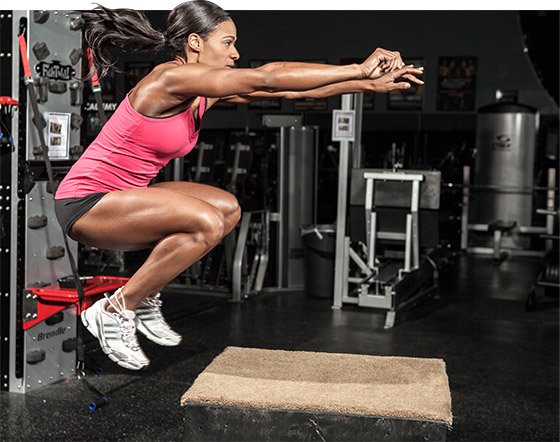
Add Weight To The Bar With Smaller Plates
Working out with a partner has some huge advantages. But creating a partner-friendly workout means finding convenient ways to load and unload weights, says Sandler. Nothing feels more like wasted effort than continually having to make 45-pound weight changes. By using the smaller plates—5s, 10s, 25s, even 35s—you can more easily make weight changes, saving time and effort. Bonus: If you do dropsets, you can simply pull off the right amount of weight without having to take off one of the big wheels and replace it with a smaller plate.



Train Your Internal Alarm To Go Off At 10 Reps
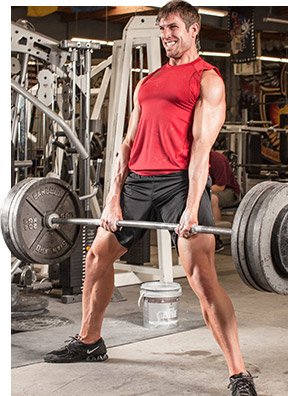
Too many lifters—at least the ones who never make any progress—come to the gym and choose weights they can lift for 10 reps, rest, and repeat. The problem with this approach is that the body has already grown accustomed to the load, and no further adaptation is taking place. You can literally train like this for years and never see progress.
Instead of hitting the usual 10 reps after your warm-up sets, choose challenging weights you can do for 6-8 reps—especially early in your workout, when your energy levels are high—and then employ sets of 8-10 later in your training session.
"If you're in fact going for 10 reps, you should barely be able to squeak out a 10th rep," says Sandler. "When you can hit 10 reps without cheating or help, then it's time to add a small plate to each side of the bar."
If you find that you're taking every set to 10 reps, your internal alarm should go off. As soon as you hear yourself say the number 10, automatically add a plate to increase the overload. Don't get lazy and work out on autopilot.
This tip applies mainly to multijoint movements, especially for individuals looking to increase their size and strength.
Do The 10-Minute Arm Workout For The Pump Of Your Life
Try this workout once and I promise you'll swear by it. Let's say you're doing chest and triceps. Do your chest workout as usual, consisting of lots of heavy presses. Rather than doing your normal triceps routine afterward—they've already been hit hard with all those multijoint moves—choose a single exercise like a rope press-down or rope overhead extension and do it for 10 minutes straight.
Here's the plan: Choose a weight you can lift for just 10-12 reps. Do your set, but then rest for only 20 seconds—no more—between sets. Fatigue will build up quickly as your arms are unable to completely recover. When you can't complete 8 reps, drop the weight by one plate on the stack.
The next set will be slightly easier now, and you may be able to do 12 again. But by keeping rest periods to just 20 seconds, that lighter weight will soon feel heavy and you can drop the weight again.
When done for 10 minutes, this simple combination of rest-pause and dropsets will deliver the best triceps pump you've ever had, and you'll feel sore for days afterward.
Try the same technique with biceps for a killer arm pump after training your back.
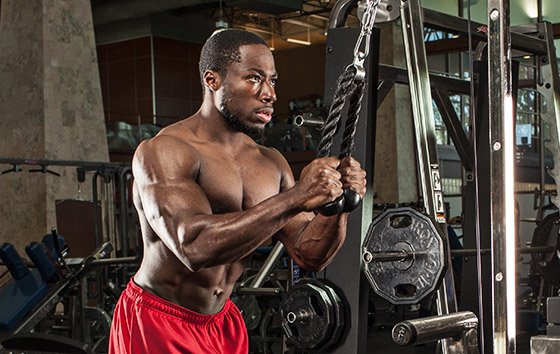
Invest In Straps For Extra Reps
Oftentimes when training your back, your grip will give out before your lats. Never sacrifice your back for your hands. When your grip starts to fail, put on a pair of lifting straps and you'll be able to get an extra rep or two on each set, which translates into more muscle growth. Don't let your grip be your limiting factor on lat day. If you want to work on grip or forearm development, throw those on to the end of your biceps workout.
"When using straps, be sure to isolate your lats and let the straps do their job," says Sandler. "You don't need to use an overly firm grip with straps. Just press lightly on them, allowing your forearms to relax a little to send the focus of the movement toward your back."
Get In, Get It Done, Get Out
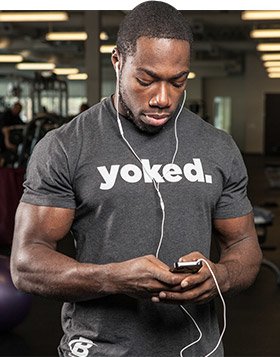
When is 60 minutes better than 120? When it's the length of your workout. Unless you wear a capital "S" on your shirt and leap tall buildings in a single bound, you probably can't sustain a high-intensity workout for long periods of time. You can, however, do a long workout with moderate intensity, but even that's suboptimal for big-time muscle gains. Powerlifters are known for longer workouts, but that's typically due to more warm-ups and substantially longer rest periods between sets.
If your workouts are taking two hours, work on increasing the intensity (and texting less between sets) by making each set heavier and harder. Don't just add more sets and exercises; that only serves to lengthen your workout.
"Unless you're a powerlifter, a faster pace does two things," says Sandler. "First, it has been shown that shorter rest times and higher volume may improve your hormone activity, which means you'll likely build size at a quicker rate. And second, it's easier to stay focused for the duration of your session. Mental fatigue contributes to less-than-perfect focus and form, not to mention increased risk of injury."
Successful bodybuilders get in and out of the gym fast—in 60-75 minutes, tops. But what they sacrifice in duration, they more than make up for with intensity. Plus, you'll save yourself an extra 45-60 minutes each day!
Learn To Keep Your Back Arched
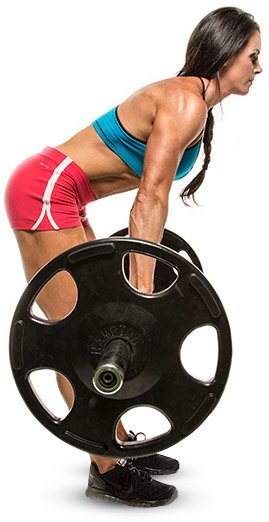
Learning how to keep your lower back arched correctly when training is like learning how to ride a bike: It doesn't come naturally at first, and you're going to make mistakes along the way. But while falling off a bike may result in only a few scrapes, using bad form and rounding your back when training with heavy weights disrupts spinal alignment and can cause permanent damage. Disc herniation can happen when you don't protect your spine during lifting.
You can save your spine and properly target your working muscles by learning how to hold the arch in your back. This is especially important for bent-over exercises like Romanian deadlifts, bent-over rows, and bent-over lateral raises.
"By having normal curvature—or even a slightly modified arch in your lower back—you'll also gain stability across the core," explains Sandler. "By breathing in on the negative and having your chest up, if you squeeze your abdominals in tight you'll increase your intra-abdominal pressure and actually provide much greater strength across your core. As an added benefit, contracting your ab muscles will actually help build them to a degree."
To check your form, stand perpendicular (sideways) to the mirror (without weights), bend over about 45 degrees, stick your butt out, keep your chest big and open, and bend your knees slightly. Look sideways at the mirror and check your body position, ensuring you have a tight arch in your lower back—not a humpback that's rounded forward. You must practice this until you get it right, and few beginners naturally get the hang of it.
Don't Duplicate Nearly Identical Exercises
You've probably heard that you want to hit a large muscle group with exercises from multiple angles over the course of your workout. Pay attention to bench angle and hand, foot, and body position so you're not repeating very similar movements. Incline, decline, and flat-bench presses work the pecs from multiple angles, but there are only small differences between flat-bench barbell, flat-bench dumbbell, and flat-bench machine presses.
"Angle training ensures that you hit every muscle fiber, especially in muscles that have multiple attachment points," says Sandler. "Performing a similar exercise with a different piece of equipment may help improve stabilizer muscle contribution, but going from a machine to a barbell, or barbell to a dumbbell, still hits the muscles at almost the same angle. At the very least, if you're going to do the same exercise at the same angle with a different piece of equipment, vary your grip or your stance [with leg exercises]. A varied grip changes the emphasis of the primary muscles and the activation pattern of the assisting muscles."
Below are some sample exercises and their similar cousins. Avoid mindlessly doing them both in the same workout:
Finish Your Workouts with Lower-Back
and Forearm Exercises
Want to know the best way to ensure you're physically incapable of doing anything later in your workout? Train your body's weakest links and train them to failure. For most of you, that's your grip and your lower back.
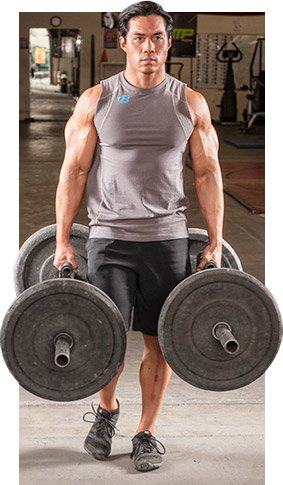
Once your lower back is fatigued, standing upright becomes nearly impossible, let alone maintaining good form with heavy weights. For safety's sake, do lower-back exercises at the end of your training session, most likely on back day.
Likewise, blow your grip with forearm or grip training, and you can forget about holding on to anything afterward. A heavy set of bent-over barbell rows after forearm training? Fuhgetaboutit. So save the forearm and grip training until the end of your biceps workout, with no other body parts to follow. It's also a good idea to skip training those body parts if they'll be necessary for the next day's workout.
Don't Look For
The Easy Way Out
Everyone wants big muscles, but no one wants to lift heavy-ass weights. Eight-time Mr. Olympia Ronnie Coleman popularized that phrase, and he was dead-on. If you're looking for shortcuts or otherwise trying to make your workouts easier—avoiding free-weight squats, bench presses, and deadlifts, for example—I'm sorry to say that you're taking the wrong approach.
Looking for the easy way out may also mean excessive cheating on your movements, such as bouncing the bar off your pecs when benching, or bringing your elbows forward when curling. Although there is a time and a place for cheating, relying on it takes stress and tension off the muscle, which is counterproductive in bodybuilding.
Find ways to increase the degree of difficulty and make movements harder, not easier. Add chains to your bench press, do negative reps, extend sets with dropsets, or decrease your rest intervals: whatever it takes to make a movement more difficult. When you substitute machine movements for free weights, do seated motions instead of standing, or otherwise look for ways to make your workout easier, you only shortchange yourself—and the results you see in the end.

Recommended For You
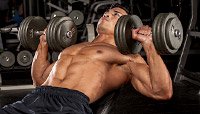
Build Big Pecs One Angle At A Time
To more fully work your pecs, start using multiple angles on the incline and decline bench!
10 Tips For A Successful Transformation
You're looking to transform, not evolve. You have time, but not forever. Follow these 10 tips and speed up your progress. Let's go!

